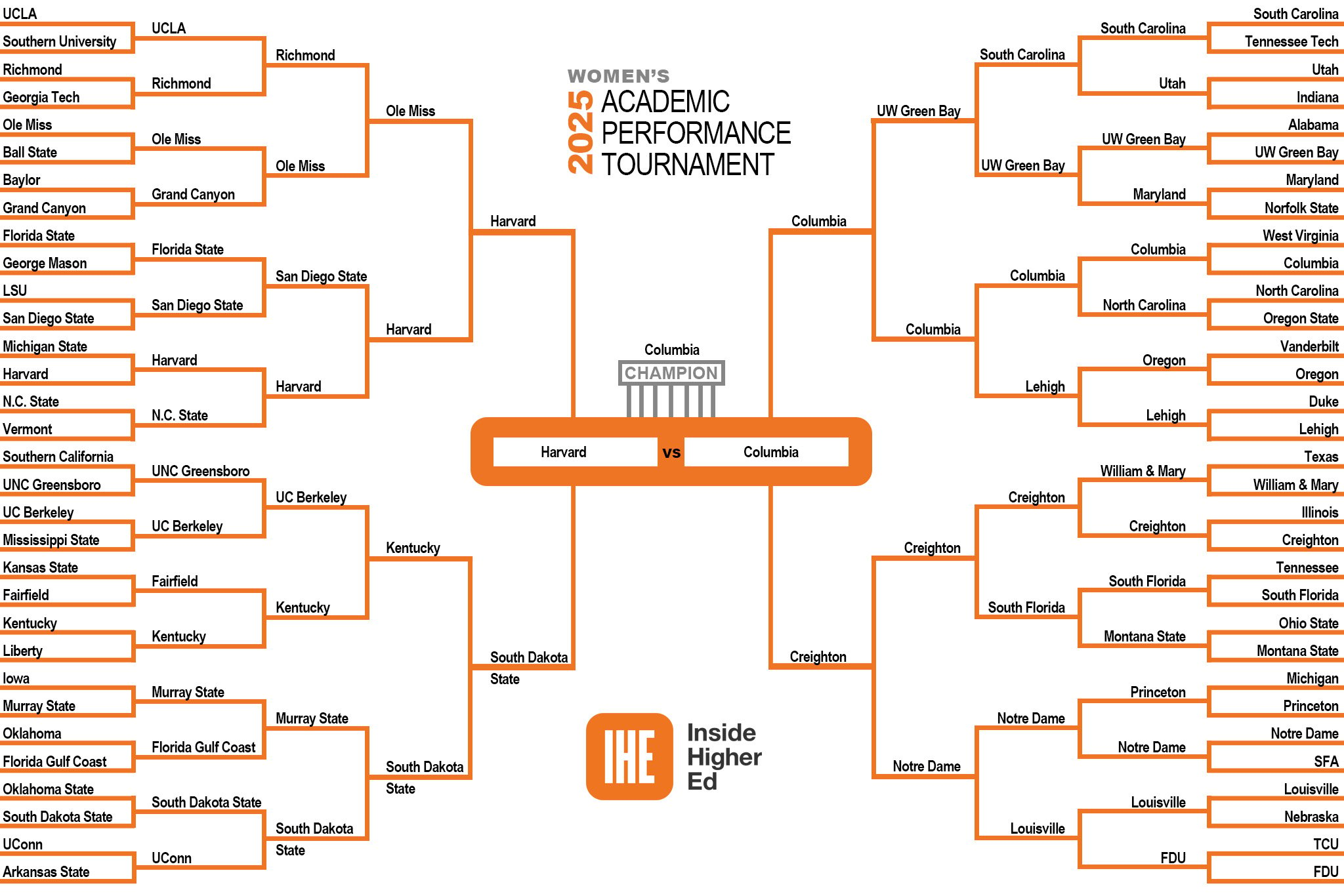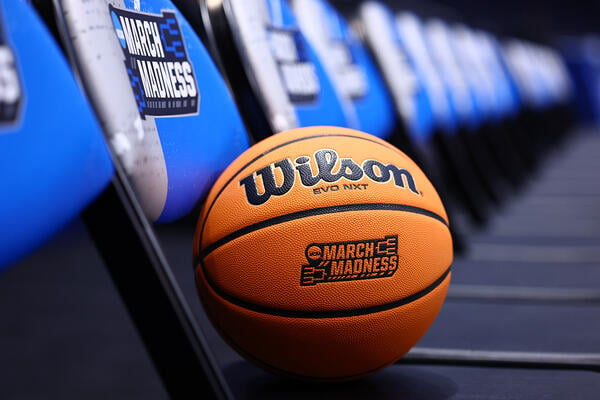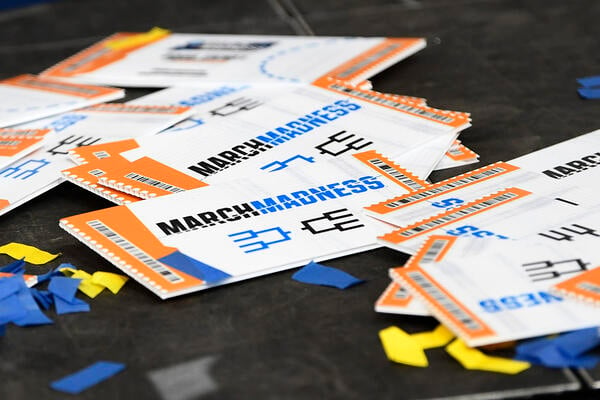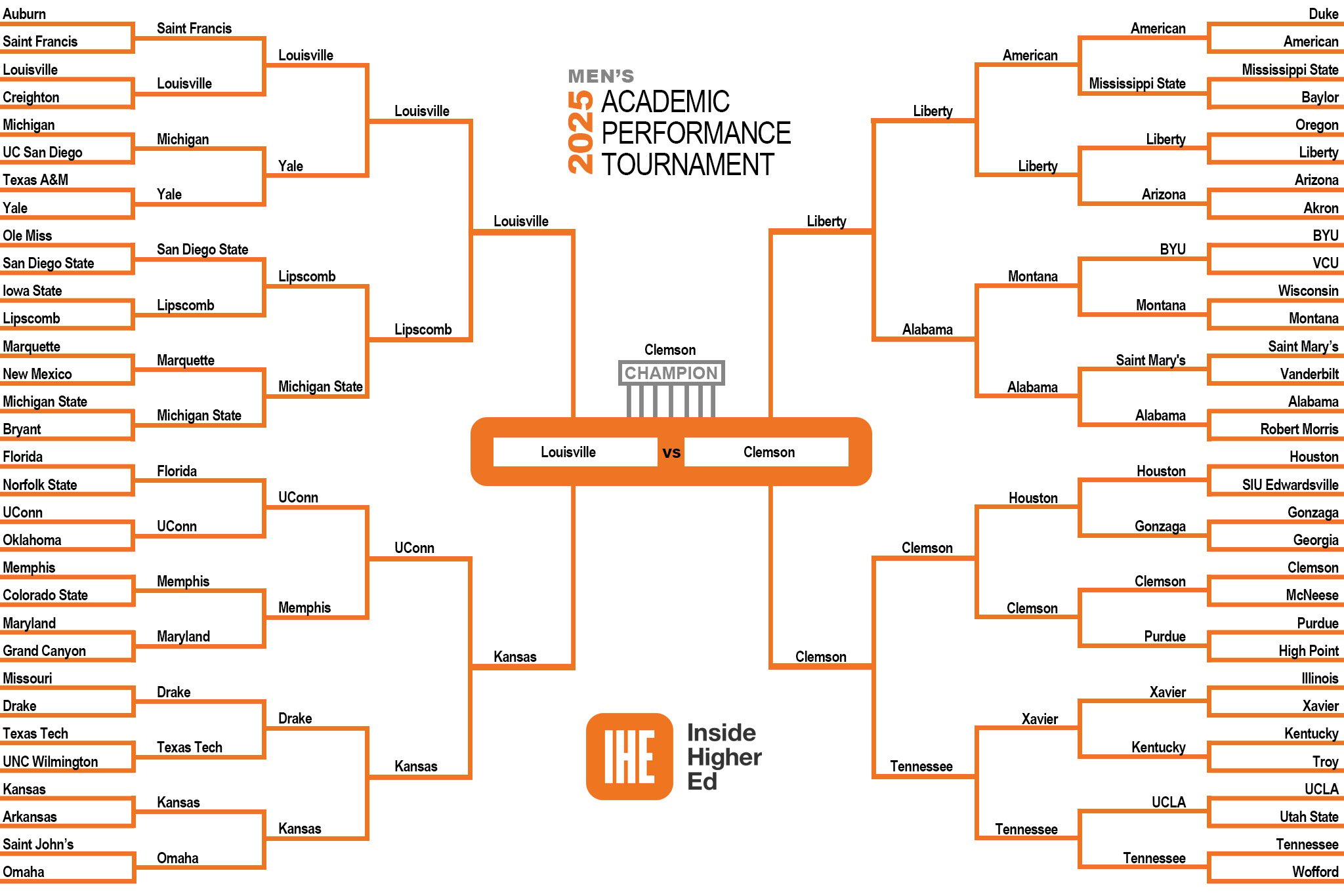The women’s tournament officially kicks off Friday.
Tyler Schank/NCAA Photos/Getty Images
Women’s basketball has experienced a surge in popularity of late, and this year is no different. The Athletic reported that regular season viewing of women’s college basketball was up 3 percent on ESPN—even if this year’s Big Ten championship didn’t quite hit the record-breaking viewership of 2024’s, fueled by fans of then–University of Iowa point guard Caitlin Clark.
Here at Inside Higher Ed, though, we celebrate the start of March Madness a little differently from the 1.44 million people who tuned in earlier this month to this year’s Big Ten championship face-off between the University of Southern California and the University of California, Los Angeles. For every tournament since 2006, we’ve created a bracket of who would take home the trophy if the winners were selected based on academic, rather than athletic, achievement.
If you’re new here (or you didn’t see the men’s bracket from yesterday), here’s how it works: Matchups are decided by which team had the higher academic progress rate—the NCAA’s own metric for measuring academic performance—based on the most recent data available, from 2022–23. The academic progress rate measures student athlete retention and academic eligibility, though some outside experts have criticized the metric for painting an incomplete picture of a team’s academic achievement.
There are, inevitably, at least a handful of ties every year. In those cases, we used several different graduation metrics to select winners. First, we used the team’s 2023–24 graduation success rate, which shows whether athletes graduated within six years of entering an institution. If teams tied again, we then turned to the teams’ federal graduation rates, which are more inclusive than the NCAA’s metric. Finally, when teams were matched up on all three of those measures, we turned to the institution’s overall GSR across their athletics programs.
It’s worth noting that federal graduation rate data is not available for Ivy League teams, so for GSR ties involving Ivies, we skipped right to the overall GSR metric. That caused some chaos in a bracket that ended up seeing a total of seven ties featuring Ivy League institutions.
Another note on methodology: Although two of the First Four games were decided before publication, we used academic metrics to select the winners of those matchups as well.
This tournament was intense. There were not two, not three, but four matchups in the second round in which both teams had perfect APRs of 1,000. Kudos to those teams!
The championship matchup was between two Ivies, Harvard University and Columbia University, both of which had perfect APRs and GSRs and whose overall GSRs were perfectly matched at 99. We’ve never seen this before in Inside Higher Ed’s 19 years of academic March Madness, so, although not ideal, we had to resort to a (virtual) coin flip. Naturally, Harvard was heads, because both start with “H.”

But, in the end, we got tails. Congratulations to the Columbia Lions—who have now won Inside Higher Ed’s academic tournament two years in a row!
Source link



